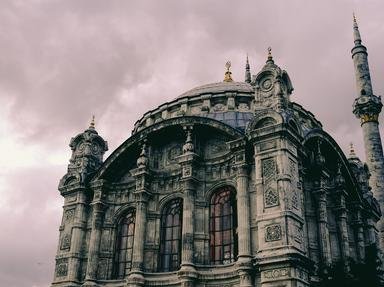Quiz Answer Key and Fun Facts
1. In which area of the ancient world did the Ottoman Empire have its beginnings?
2. What Turkish chieftain brought together his followers into a group that became known to history as the Ottomans?
3. What title was traditionally given to a chief of the Ottoman Turks?
4. What Byzantine city did the Sultan Mehmet conquer in 1453 using the recently-invented cannon?
5. What influential Ottoman sultan won the nicknames 'Magnificent' and 'Lawgiver'?
6. After the death of its "Magnificent" ruler, the Ottoman Empire fell into a period of decline. Which of the following had the most influence from 1533-1656?
7. Which 1683 battle marked the end of Ottoman expansion into Europe?
8. Which of the following did NOT occur during the Greek revolt from the Ottoman Empire from 1821-1829?
9. Which country did the Ottoman Turks fight against during the Crimean War from 1853-1856?
10. It is a well-known fact that the Ottoman Empire joined the Central Powers, the losing side of WWI. Why did they join with Austria-Hungary, Germany, and Bulgaria?
Source: Author
ponycargirl
This quiz was reviewed by FunTrivia editor
trident before going online.
Any errors found in FunTrivia content are routinely corrected through our feedback system.
